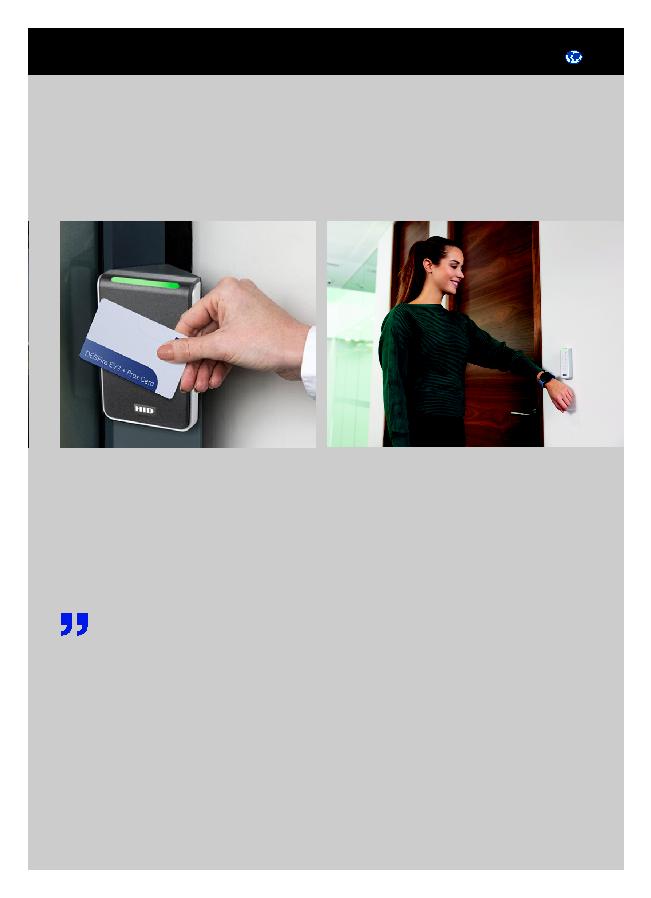
d e t e k t o r i n t e r n a t i o n a l · 1 7
Editor: Lennart Alexandrie
Three signs it's time to upgrade your access control system
The question isn't just whether your access control system works it's whether it still fits
your organisation's current and future requirements.
Younger employees, often view traditional key cards as outdated and inconvenient.
ensure credentials cannot be eas-
ily duplicated or tampered with.
3. Missing out on
operational opportunities
Legacy access control systems
are often single-purpose tools in
a multi-purpose world. Modern
smart cards and mobile access
solutions can do far more than
just open doors they can inte-
grate with building automation
systems, manage parking access,
handle cafeteria payments, and
even control printer usage.
By sticking with basic prox-
imity cards, organisations not
only accept security risks but also
miss opportunities to streamline
operations, reduce costs, and
create a more seamless experience
for employees and visitors.
Triggers for migration
decisions
So, what typically prompts
organisations to make the switch?
Based on HID's experience,
Barton identifies and comments
on five common scenarios that
serve as eye-openers for end users
to upgrade:
Security incidents
"Nothing motivates immediate
action quite like discovering that
someone gained unauthorised
access to your facility or data.
Organisations that experience a
security breach often fast-track
their migration plans, recognising
that their system wasn't protecting
them as well as it should have,"
Barton says.
Proactive security
assessments
"Forward-thinking organisa-
tions don't wait for a breach to
reveal weaknesses," Barton notes.
"Regular security audits and risk
assessments can uncover outdated
technologies that no longer meet
today's threat landscape. By iden-
tifying vulnerabilities early, these
organisations can plan upgrades
on their own terms--rather than
reacting under pressure after an
incident."
User-driven demand
"Increasingly, employees and visi-
tors expect the same convenience
they get from their smartphones
everywhere else including work.
Why should they carry both a
phone and a separate access card?
This expectation is particularly
strong among younger employees,
who view traditional key cards as
outdated and inconvenient," he
adds.
The aesthetic awakening
"Sometimes the catalyst is as
simple as realising that a 30-year-
old reader looks out of place in
a modern, professional environ-
ment. Organisations investing in
updated office spaces often realise
their access control technology
should reflect the same attention
to design and functionality."
Smart building readiness
Finally, many organisations pursu-
ing smart building initiatives
discover that their legacy systems
cannot integrate with modern
building automation, energy
management, or sustainability
platforms.
"When outdated physical ac-
cess control systems become the
bottleneck preventing occupan-
cy-based HVAC optimisation
or environmental reporting,
migration becomes essential for
meeting operational efficiency
goals," Barton concludes.
Organisations that experience a security
breach often fast-track their migration
plans, recognising that their system wasn't
protecting them as well as it should have."

